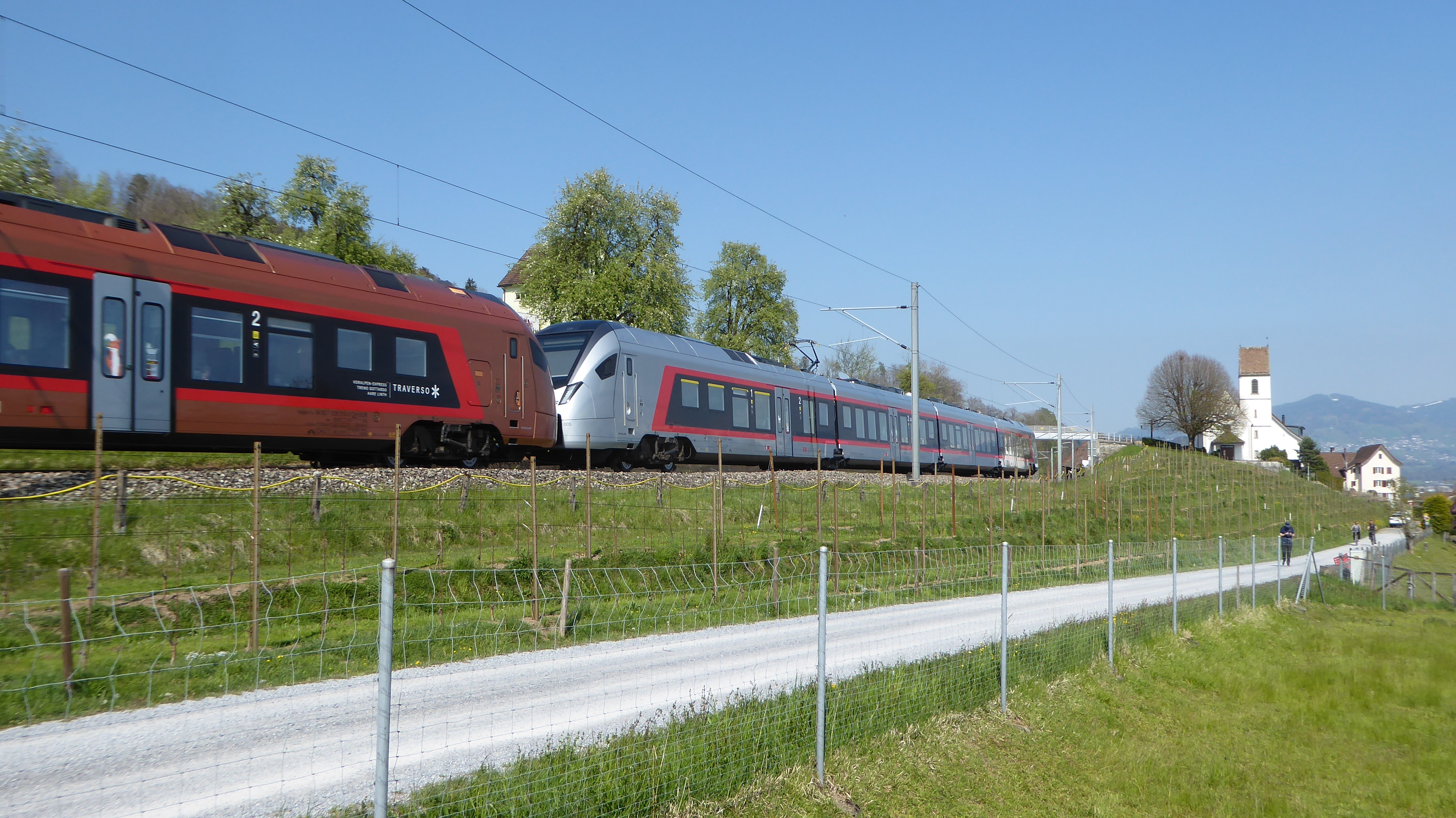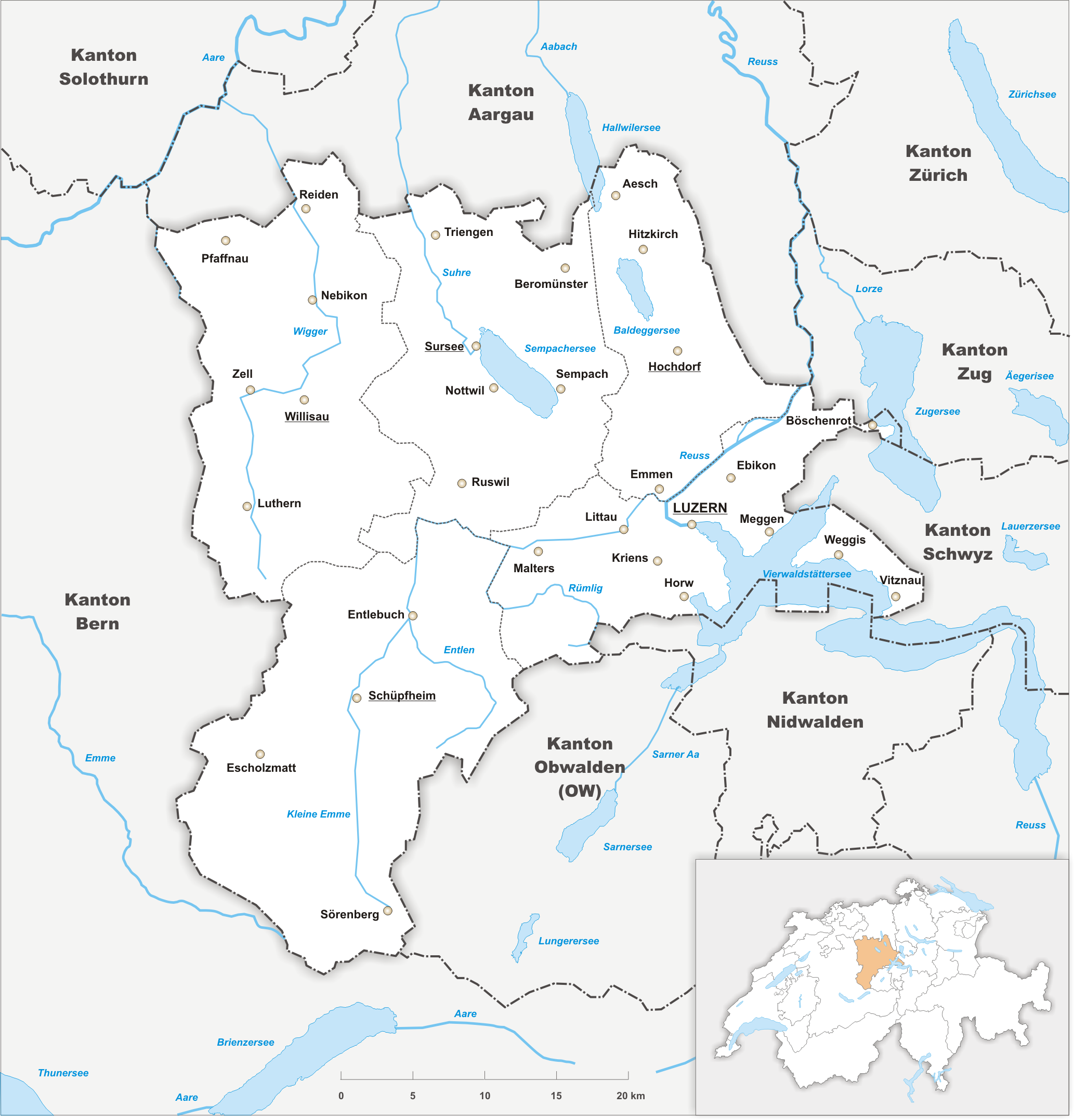|
Meggen Zentrum Railway Station
Meggen Zentrum railway station (german: Bahnhof Meggen Zentrum) is a railway station in the municipality of Meggen, in the Swiss canton of Lucerne. It is an intermediate stop on the standard gauge Lucerne–Immensee line of Swiss Federal Railways. Services the following services stop at Meggen Zentrum: * ''Voralpen-Express'': hourly service between Lucerne and St. Gallen. * Lucerne S-Bahn : hourly service between Lucerne and Brunnen Brunnen is a resort on Lake Lucerne in Switzerland, part of the municipality Ingenbohl (Canton of Schwyz), at . Brunnen railway station, on the Gotthard railway, is served by hourly InterRegio trains, and by lines S2 of the Stadtbahn Zug, whi .... References External links * * {{SBB web Railway stations in the canton of Lucerne Swiss Federal Railways stations ... [...More Info...] [...Related Items...] OR: [Wikipedia] [Google] [Baidu] |
Voralpen Express
The ''Voralpen-Express'' (''VAE'') is a named train connecting small to medium-sized cities and villages in Central and Eastern Switzerland, carrying this name since 1992. It is operated by Südostbahn (SOB) and runs every hour between St. Gallen and Lucerne, bypassing Zurich. Its name derives from the fact that it traverses the Prealps (German: Voralpen). History The first through trains between Romanshorn ( Lake Constance) and Arth-Goldau started in 1940 after the electrification of the Südostbahn line between Rapperswil and Arth-Goldau. Romanshorn–Rapperswil had been under wires since 1926/31. The trains, fir green MUs composed of CFZe 4/4 and BCFZe 4/4 (both later called ABe 4/4) motor coaches and coaches, were jointly operated by Bodensee–Toggenburg-Bahn (BT), Südostbahn (SOB), and the Swiss Federal Railways (SBB CFF FFS). In 1944, BT added buffet cars to the trainsets. In 1947, some trains continued from Arth-Goldau to Lucerne. In 1960, operation was chan ... [...More Info...] [...Related Items...] OR: [Wikipedia] [Google] [Baidu] |
Meggen
Meggen is a municipality in the district of Lucerne in the canton of Lucerne in Switzerland. History Meggen is first mentioned in 1226 as ''Meken'', though a 14th Century copy of an older document mentions ''in Acta Murensia'' around 1160. Geography Meggen has an area of . Of this area, 47.6% is used for agricultural purposes, while 23.7% is forested. Of the rest of the land, 28.5% is settled (buildings or roads) and the remainder (0.3%) is non-productive (rivers, glaciers or mountains). , 23.69% of the total land area was forested. Of the agricultural land, 41.6% is used for farming or pastures, while 6.06% is used for orchards or vine crops. Of the settled areas, 20.25% is covered with buildings, 0.41% is industrial, 0.69% is classed as special developments, 1.79% is parks or greenbelts and 5.37% is transportation infrastructure. Of the unproductive areas, and 0.14% is other unproductive land. The municipality is located on the Küssnacht arm of the Lake of Lucerne. ... [...More Info...] [...Related Items...] OR: [Wikipedia] [Google] [Baidu] |
Switzerland
). Swiss law does not designate a ''capital'' as such, but the federal parliament and government are installed in Bern, while other federal institutions, such as the federal courts, are in other cities (Bellinzona, Lausanne, Luzern, Neuchâtel, St. Gallen a.o.). , coordinates = , largest_city = Zürich , official_languages = , englishmotto = "One for all, all for one" , religion_year = 2020 , religion_ref = , religion = , demonym = , german: Schweizer/Schweizerin, french: Suisse/Suissesse, it, svizzero/svizzera or , rm, Svizzer/Svizra , government_type = Federalism, Federal assembly-independent Directorial system, directorial republic with elements of a direct democracy , leader_title1 = Federal Council (Switzerland), Federal Council , leader_name1 = , leader_title2 = , leader_name2 = Walter Thurnherr , legislature = Fe ... [...More Info...] [...Related Items...] OR: [Wikipedia] [Google] [Baidu] |
Swiss Federal Railways
Swiss Federal Railways (german: link=no, Schweizerische Bundesbahnen, ''SBB''; french: link=no, Chemins de fer fédéraux suisses, ''CFF''; it, Ferrovie federali svizzere, ''FFS'') is the national railway company of Switzerland. It is usually referred to by the initials of its German, French, and Italian names, either as SBB CFF FFS, or used separately. The Romansh version of its name, ''Viafiers federalas svizras'', is not officially used. The official English abbreviation is "SBB", instead of the English acronym such as "SFR", which stands for ''Swiss Federal Railways'' itself. The company, founded in 1902, is headquartered in Bern. It used to be a government institution, but since 1999 it has been a special stock corporation whose shares are held by the Swiss Confederation and the Swiss cantons. It is currently the largest rail and transport company of Switzerland, and operates on most standard gauge lines of the Swiss network. It also heavily collaborates with ... [...More Info...] [...Related Items...] OR: [Wikipedia] [Google] [Baidu] |
Südostbahn
The Südostbahn (German, literally meaning "South-Eastern Railway") – commonly abbreviated to SOB – is a Swiss adhesion railway company, and a network in Central and Eastern Switzerland. It resulted from the merger of the original SOB with the Bodensee–Toggenburg railway (BT) at the end of 2001. The Schweizerische Südostbahn AG (Swiss South-Eastern Railway SA) is a small private railway jointly owned by the cantonal and federal governments as an Aktiengesellschaft (AG). Network The rail network of the Südostbahn (SOB) consists of that formerly owned by BT in northeast Switzerland (between Lake Constance and Toggenburg): * Romanshorn– St. Gallen St. Fiden line, * St. Gallen–Herisau–Degersheim–Wattwil line, and * (Wattwil–)Ebnat-Kappel–Krummenau– Nesslau-Neu Sankt Johann line, and that previously owned by the original SOB located predominantly in Central Switzerland: * Rapperswil–Pfäffikon SZ line, * Pfäffikon S ... [...More Info...] [...Related Items...] OR: [Wikipedia] [Google] [Baidu] |
Lake Lucerne Navigation Company
The ''Schifffahrtsgesellschaft des Vierwaldstättersees'' or Lake Lucerne Navigation Company (commonly abbreviated to SGV) is a public Switzerland, Swiss company operating passenger ships and boats on Lake Lucerne. The company is based in the Lucerne, city of Lucerne, and its origins can be traced back to 1836. Today it is the largest inland shipping company in Switzerland, and is notable for operating a number of historic paddle steamers, in addition to more modern motor vessels. The company provides public transport routes to 32 places along the shore of the lake, with interchange to both main line and mountain railways at various points. Whilst much usage of these services is tourist or leisure oriented, the company also continues to provide practical public transport links between the smaller lakeside communities. The company also owns its own shipyard, Shiptec Lucerne, which undertakes new build and rebuild work both for the SGV and for other shipping companies. History L ... [...More Info...] [...Related Items...] OR: [Wikipedia] [Google] [Baidu] |
Canton Of Switzerland
The 26 cantons of Switzerland (german: Kanton; french: canton ; it, cantone; Sursilvan and Surmiran: ; Vallader and Puter: ; Sutsilvan: ; Rumantsch Grischun: ) are the member states of the Swiss Confederation. The nucleus of the Swiss Confederacy in the form of the first three confederate allies used to be referred to as the . Two important periods in the development of the Old Swiss Confederacy are summarized by the terms ('Eight Cantons'; from 1353–1481) and ('Thirteen Cantons', from 1513–1798).rendered "the 'confederacy of eight'" and "the 'Thirteen-Canton Confederation'", respectively, in: Each canton of the Old Swiss Confederacy, formerly also ('lieu/locality', from before 1450), or ('estate', from ), was a fully sovereign state with its own border controls, army, and currency from at least the Treaty of Westphalia (1648) until the establishment of the Swiss federal state in 1848, with a brief period of centralised government during the Helvetic Republic (179 ... [...More Info...] [...Related Items...] OR: [Wikipedia] [Google] [Baidu] |
Canton Of Lucerne
The canton of Lucerne (german: Kanton Luzern rm, Chantun Lucerna french: Canton de Lucerne it, Canton Lucerna) is a canton of Switzerland. It is located in the centre of Switzerland. The population of the canton (as of ) is . , the population included 57,268 foreigners, or about 15.8% of the total population. The cantonal capital is Lucerne. History The canton of Lucerne comprises territories acquired by its capital Lucerne, either by treaty, armed occupation or purchase. The first town acquired was Weggis (in 1380), Rothenburg, Kriens, Horw, Sempach and Hochdorf (all in 1394), Wolhusen and Entlebuch (1405), the so-called "Habsburger region" to the northeast of the town of Lucerne (1406), Willisau (1407), Sursee and Beromünster (1415), Malters (1477) and Littau (1481), while in 1803, in exchange for Hitzkirch, Merenschwand (held since 1397) was given up. Prehistory The oldest traces of humans in the Lucerne area are stone artifacts and cave bear bones found in the Ste ... [...More Info...] [...Related Items...] OR: [Wikipedia] [Google] [Baidu] |
Voralpen-Express
The ''Voralpen-Express'' (''VAE'') is a named train connecting small to medium-sized cities and villages in Central and Eastern Switzerland, carrying this name since 1992. It is operated by Südostbahn (SOB) and runs every hour between St. Gallen and Lucerne, bypassing Zurich. Its name derives from the fact that it traverses the Prealps (German: Voralpen). History The first through trains between Romanshorn (Lake Constance) and Arth-Goldau started in 1940 after the electrification of the Südostbahn line between Rapperswil and Arth-Goldau. Romanshorn–Rapperswil had been under wires since 1926/31. The trains, fir green MUs composed of CFZe 4/4 and BCFZe 4/4 (both later called ABe 4/4) motor coaches and coaches, were jointly operated by Bodensee–Toggenburg-Bahn (BT), Südostbahn (SOB), and the Swiss Federal Railways (SBB CFF FFS). In 1944, BT added buffet cars to the trainsets. In 1947, some trains continued from Arth-Goldau to Lucerne. In 1960, operation was changed t ... [...More Info...] [...Related Items...] OR: [Wikipedia] [Google] [Baidu] |
Lucerne Railway Station
Lucerne railway station (german: Bahnhof Luzern) is a major hub of the rail network of Switzerland, in the city of Lucerne in the canton of Lucerne. It is a terminal station serving domestic and international traffic on several rail lines, and is situated in a city centre and waterfront location on the south side of Lake Lucerne. History The first station was opened on edge of Lake Lucerne in 1856 at the end of the Schweizerische Centralbahn main line from Olten and Basel where it connected with the French and German railways. The route of the railway—now the course of Pilatusstrasse ( Pilatus Street)—was still undeveloped. The terminal station led directly to the pier for boat services on the lake and to the gates of the city of Lucerne. As a result, the area at the lake shore developed into an important railway junction. In the 19th century it rapidly developed into a hub with the introduction of steam navigation on the lake and the construction of several railway lines: the ... [...More Info...] [...Related Items...] OR: [Wikipedia] [Google] [Baidu] |







